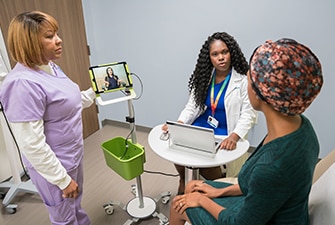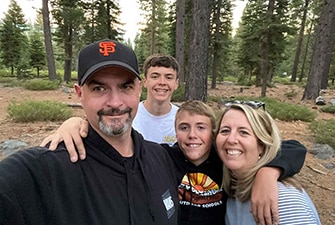A pathologist is a doctor who helps diagnose disease. They’ll see if you have cancer and tell you the size, shape, and type of cancer cells found in your cancer pathology test. The test tells them all about the cancer cells, including the cancer cell grade and cancer stage. This explains how large the tumor is and how fast it may be growing. It also shows if cancer cells have spread to other parts of the body. Your care team will use this information to figure out your treatment options.
Cancer diagnosis
How cancer is diagnosed
Cancer starts small — usually when just one cell or a group of cells in the body or blood begin to change. Over time, the abnormal cells multiply and grow, sometimes spreading to other parts of the body. If a group of abnormal cells grows together, a tumor may form. Some tumors are benign, or noncancerous, and some tumors are malignant, or cancerous. Doctors use various screening and diagnostic tests to check for potential cancer in the body or blood. A diagnostic test identifies, or diagnoses, a disease.
Here are some common tests used to detect cancer.
Removes a small tissue sample to check for abnormal cells under a microscope. How tissue is removed depends on where the sample will be taken from and your overall health.
Uses a radioactive substance called a tracer that’s injected into a vein in the arm. A special camera takes pictures of the tracer after it travels through your bloodstream into your bones.
Takes a blood sample from a vein in your arm to understand the health of your blood cells. Often used alongside other tests.
Takes detailed pictures of parts of your body and the structures inside your body using X-ray scans.
Uses a thin, bendable lighted tube that’s inserted gently into your body. The tube has an ultrasound probe and camera at the tip to take pictures of your organs.
Makes 3D images of your organs, tissues, and skeletal system from outside of your body to help diagnose a condition.
Detects tumors with a camera that sees how much cancer has spread in the body.
Uses a special camera and a safe, injectable radiotracer to take pictures of your organs and tissues.
Records pictures or videos that are detected from sound waves when a small, handheld device is passed over your body.

Browse by cancer type
As a Kaiser Permanente member, you have access to a full spectrum of advanced cancer diagnosis services. Our vast network of cancer specialists can diagnose and treat any type and stage of cancer.
Common cancer types
Understanding your cancer diagnosis
After your tests and diagnosis, your care team will research your case. Your personal doctor and specialists will help you understand your results and treatment options. Together, they’ll help create and manage your treatment plan.
Everyone’s cancer experience is unique. Your personal doctor and team of cancer specialists work together to create a care plan that’s right for you. They’ll meet with you to discuss your treatment options, which may include clinical research trials if you qualify.
Many aspects of your life may change after a cancer diagnosis. Despite the uncertainty you may be experiencing, it can help to stick to regular routines.
Palliative care can help you understand your illness and relieve your pain while improving your quality of life. It’s appropriate for all ages at any stage of cancer.
We offer multiple resources to support your well-being throughout your cancer journey. Let your care team know about your symptoms or concerns, whether they’re physical or emotional, so they can provide the care you need.
Building a support network is an important part of preparing for cancer treatment and recovery. Ask a loved one to serve as your caregiver. They’ll support you at your upcoming appointments and follow-up visits.
You also can create a life care plan to help your loved ones represent your wishes throughout your cancer journey. These discussions may provide comfort to you and to those who may need to make difficult treatment decisions on your behalf. If your health changes over time, rest assured that you can revise your life care plan.
Miguel and Paula’s story
How a husband and wife both beat colon cancer
Miguel and Paula never thought they’d both get colorectal cancer — one of the most common cancers among Latinos.* But thanks to regular screenings, early detection, and treatment, they’re now cancer-free.
Related cancer articles
Footnote
*Cancer Facts & Figures for Hispanic/Latino People 2021–2023, American Cancer Society.
Connecting to care








